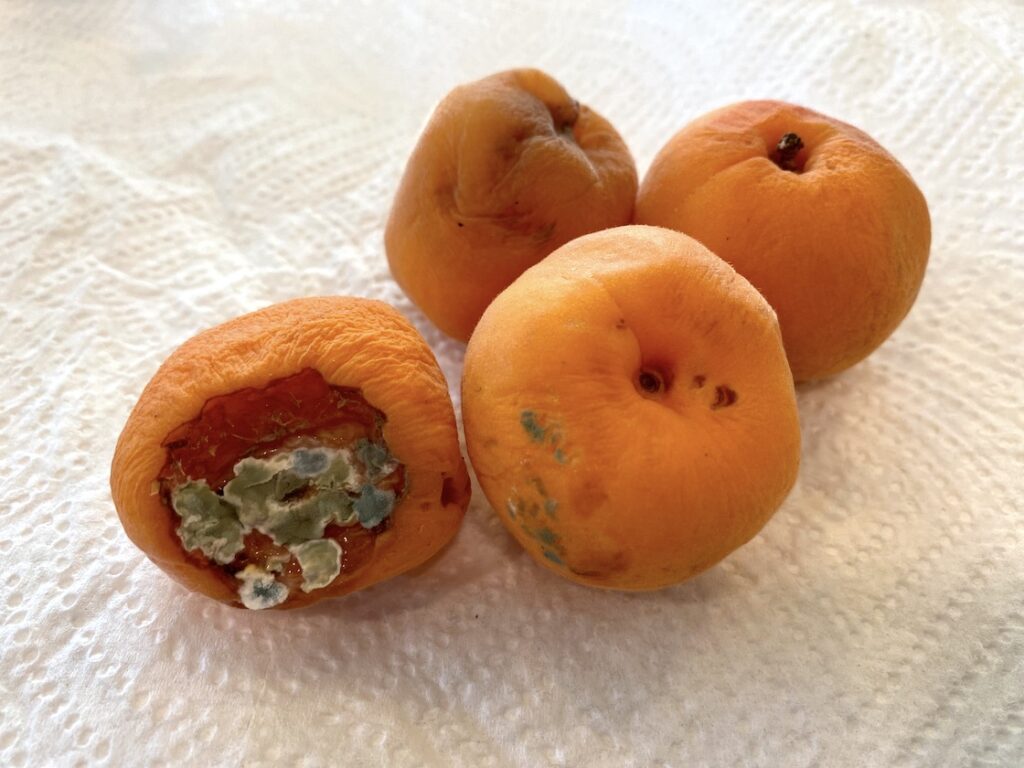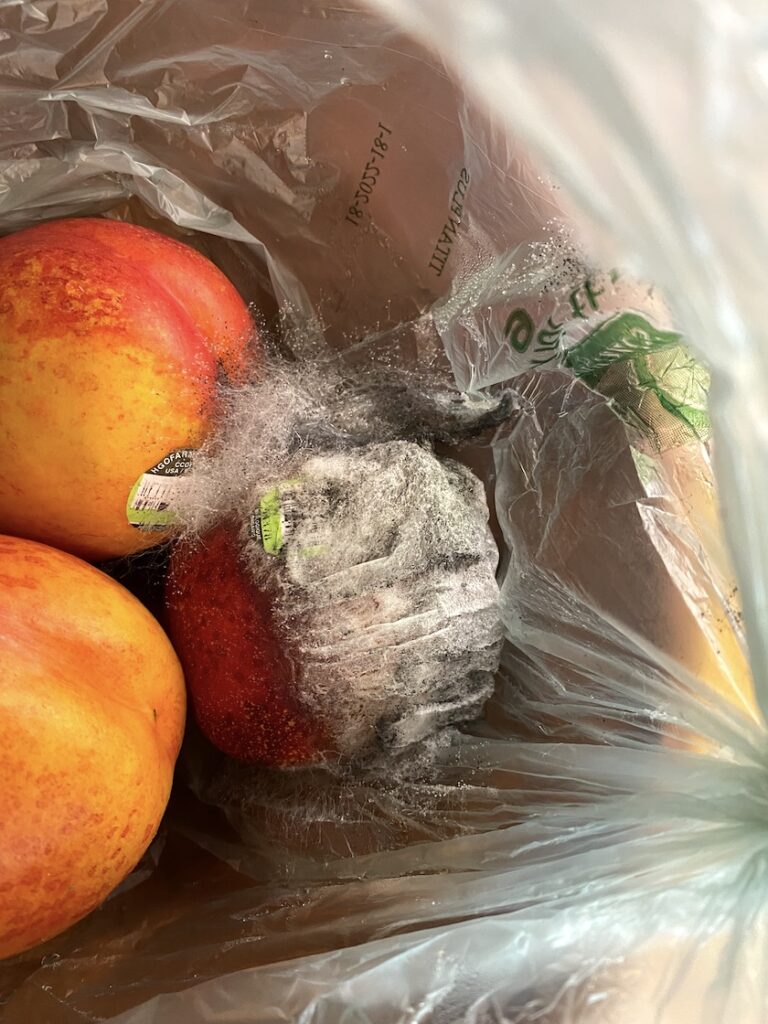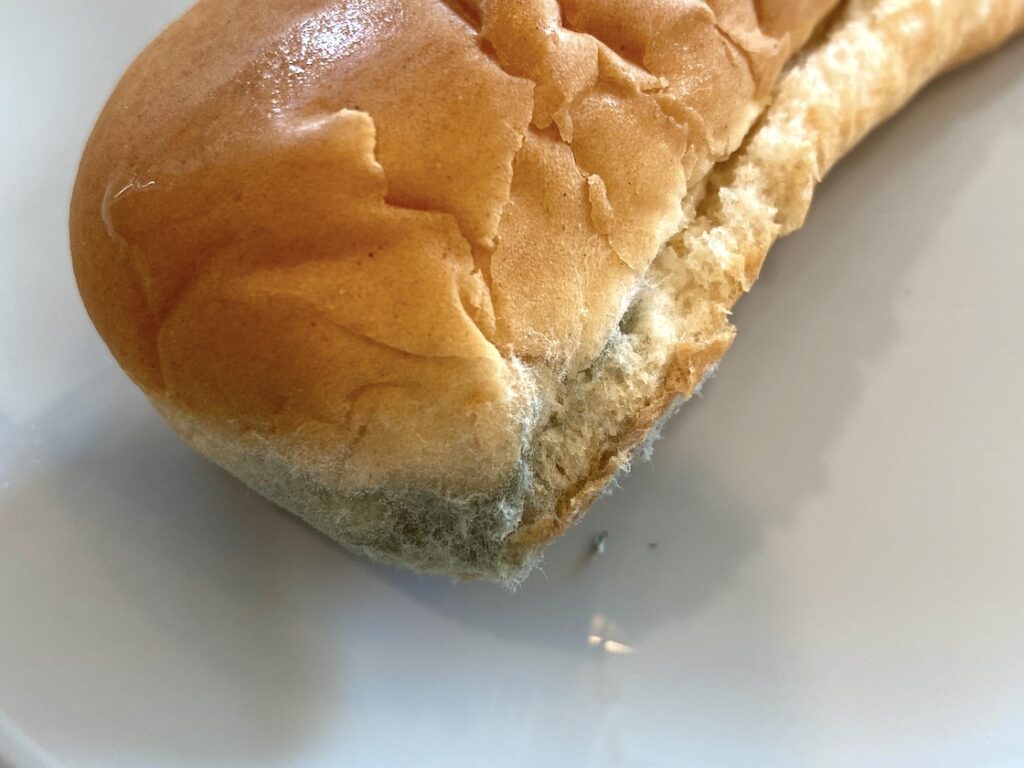Mold on Apricots
Image shows what mold looked like on two apricots. “Mold spreads quickly in fruits and vegetables.” (U.S. DOA.) When mold appears on soft fruits and vegetables, like cucumbers, peaches, and tomatoes, the fruit or vegetable should be thrown away and not used. “Soft fruits and vegetables with high moisture content can be contaminated [with mold] below the surface,” according to the U.S Department of Agriculture, which recommends not just cutting the moldy part off, but throwing away the entire piece of fruit or the vegetable.

Mold on Nectarines
Moldy nectarines should be thrown away and not eaten. Mold on one nectarine may have contaminated adjacent fruit. Non moldy nectarines may be salvageable.

Mold on White Bread
Three types of mold are commonly seen on bread: Black bread mold, Penicillium, Cladosporium. Moldy bread should never be eaten. Any and all foods classified as “bread and baked goods” should be discarded because “porous foods can be contaminated below the surface,” according to the U.S. Department of Agriculture.

Mold on Wicker Basket
These images show mold on a faux wicker basket and its fabric cover. The basket sat beneath a slowly dripping drain pipe in an apartment’s bathroom vanity. The color and texture of this mold suggest Stachybotrys chartarum (“black mold”), but testing was never done so this can’t be said for certain. Basket thrown away, leaky drain pipe fixed.







